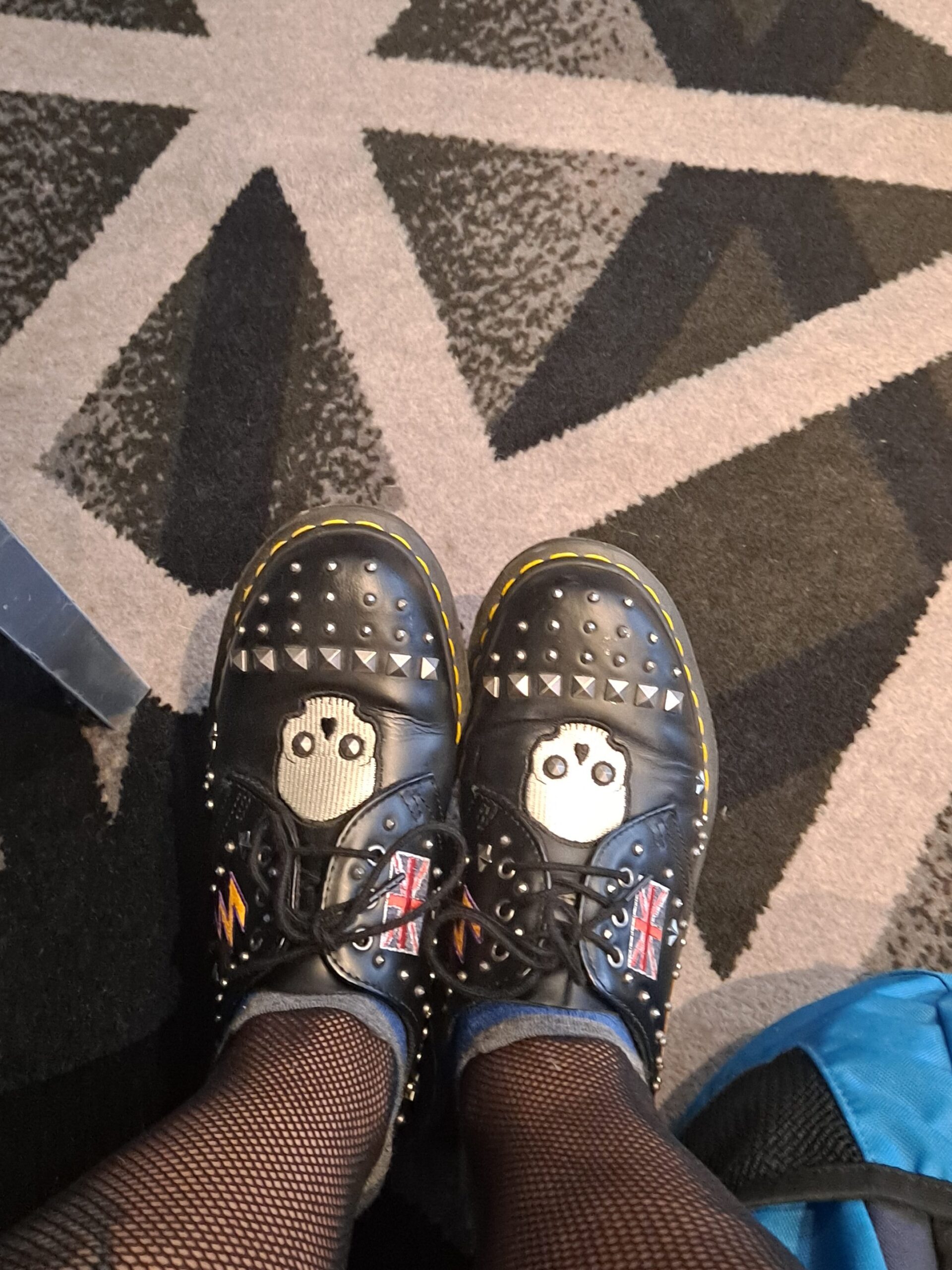
Last year and earlier this year i wrote two different blog posts reflecting on aspects of conferences I would be attending, each of which I was also on the program committee for. The most recent one was about OER24 in Cork, Ireland, and was a rumination on my relationship with the city, and how my experiences there made me excited for people who had never been in Cork to experience it for the first time, In the first post, done for ALTC23 in Warwick, I was writing about what I thought conferences were for, and what my own personal journey through academic and academic-adjacent conferences meant for my own practices. I presumed to give a bit of advice at the end.
“I think it takes multiple opportunities to engage before it’s possible to get to the point where you can move away from broadcasting and focus on engaging with, experiencing, building your network of people as the content of any given conference…
…If you are a first-timer at ALT-C, when you are there, I hope you think about what could be different the next time you attend. I hope that you return, to be able to experience your own arc of development around conferences, connecting, and the balance between broadcast and engagement.”
Conferences require multiple modes of engagement from participants.
I think what is not often considered enough are the ways that the spaces conferences are set in can shape, facilitate, and hinder those modes of engagement.
This year, unlike any other year, ALTC was at a hotel. Specifically, an airport hotel in Manchester. Previous venues have been university locations, with the various kinds of conference activities spread across classrooms, lecture halls, atriums, and interstitial spaces such as mezzanines and lounges. This year we had a pretty standard hotel conference set up. I’ve been at conferences (especially large ones like the American Library Association and the American Anthropological Association) set in large hotels or conference centers, and I know that sometimes the logistics or size of the conference requires these corporate spaces as settings.
Doing meetings in conference hotels means that the connections and technology are set up for conferences as a default. It means that you are guaranteed rooms for the delivery of your sessions, with plenty of chairs for attendees. It means you know at least one room will be perfectly set up for large plenary sessions as well as (if necessary) a conference dinner.
But the contrast with past ALT conferences that had been at university campuses prompted me to think about what the University settings brought to the meetings that a corporate setup did not.
- An opportunity for the university to act, alongside the organization, to host the meeting. In the past I have seen university presidents kick off the opening keynotes. I’ve seen special venues used to great effect to showcase the physical plant of the University. Specially set up classrooms for active learning, or maker spaces, or renovated (or very old and still amazing) library spaces can all contribute to the content of the conference, in their own way, by grounding the conference experience with local details.
- An opportunity for local staff to showcase their work to their colleagues coming to the meetings. I’ve seen local staff acting as helpers and moderators and facilitators at the meeting so that attendees were surrounded by people who knew where things were and why, and who were happy to tell you the history of it all (good and bad!). It was also an opportunity for them to share their institutional practices with off-campus colleagues in a concrete way, not just in the delivery of their presentations in sessions.
- An opportunity for the local community, not just the university, to be a part of the conference experience. This is more “local color,” and also cafes, pubs, museums, restaurants, and parks can all serve as third spaces to conference session rooms and lecture halls, places for people to connect and also rest and recover before they have to connect some more. Having access to more than just meeting rooms and conference center/hotel venues also accommodates the need for places that allow for varied modes of engagement, not just broadcasting of ideas via presentations.
- In the case of ALTC23 and OER24, it was a chance for local teams to invite their academic colleagues to witness the conference, its content, and the network of people who constitute the conference community. It’s an opportunity to make visible the professional identity of people who are often not visible enough in their own institutions.
I get it, I do, there are financial reasons to locate events in places that are corporate and containable. I also think that the loss of the kinds of things I describe above might not make the conference experience as rich, or as likely to encourage people to come again the following year.
So if you are organizing a conference event, I would say it’s worth considering carefully: what is a conference venue for? I would recommend tying the answer to that question to what you think conferences themselves are for. Conferences require not just spaces to fill, but meaningful places that are configured for people to be human in a variety of ways with each other. They are for people. Just like Universities should be.
